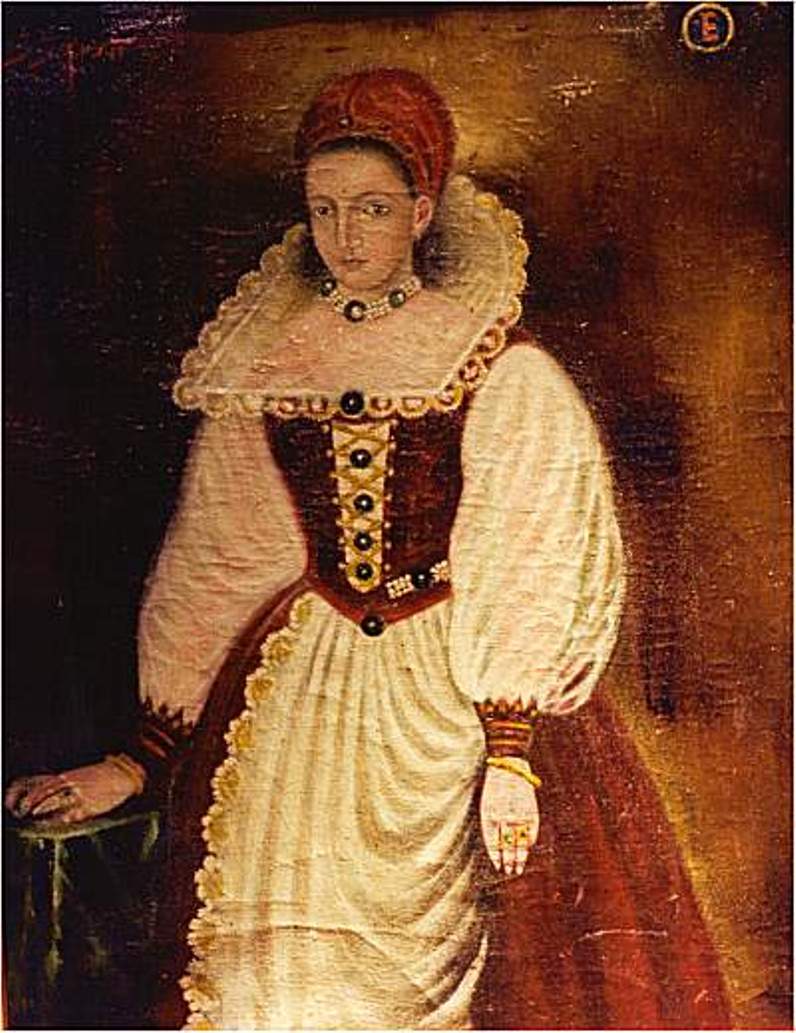| Painting Name | Elizabeth Bathory |
| Current Location | Lost |
The represented painting is the only picture of Elizabeth Bathory – the countess of Transylvania depicted in the late 16th century by an artist whose identification is not available today.
Elizabeth Bathory has a notable legacy. She has left for us a life which is unbelievable, grotesque and to some extent makes us hate Vampires even more (not the phony vampire’s depicted in today’s novels, I won’t even consider them as genuine vampires.)
According to modern researchers, she was a victim of Sadism – A mental disorder in which a person tries to gain pleasure (not happiness) through torturing others – humiliation, molesting, sexual abuse, excessive torturing, cutting body parts and murders. The range of the ways to gain pleasure for a sadistic person is different but all includes the pain and torture. This temperament could easily be on the top of the list of the most brutal mentalities a person could have. Pleasure in torturing others, you must have to have a real degraded mind for that.
The reason of building up an atrocious mind is not very clear in history, but as a person in her early years, she was not a noble woman either.
She was born in 1560 and in 1572, at the age of 12, she was engaged to Ferenc Nadasdy , a Count, in the British aristocratic ranks. The engagement happened for political reasons. There was no love involved.
She had a loose character from early age. She got pregnant before the marriage by a servant. The servant was severely punished (castration and burned alive) but she escaped safely for her higher social rank.
Still the marriage happened in 1575 and she became the Countess of Transylvania. They moved to the Nádasdy Castle in Sárvár and from that moment on, as she gained some powers in person, the terror began on the town.
After her husband’s death few years later, she and her four comrades started to kill young girls of the town under her orders. That was a terror which lasted for over a decade in the town killing around 650 young girls. The victims were allured in the castle or were kidnapped.
Anyhow, she was a heartless murderer and enjoyed every bit of her victim’s screams, pains and deaths. According to witnesses, whether she would enjoy torturing the victims in every devious way possible or she would order one of the four servants to do that. This secret macabre was revealed ultimately to the public and authorities when the investigation was held and all of them were accused, arrested and punished for their unforgivable crimes.
Among her four comrades, the woman was imprisoned for life time, one man was beheaded and two others were first got their fingers ripped off with pincers and then were burned alive.
About, Elizabeth Bathory, once again getting the benefit from her higher social ranks, instead of death penalty, she got the punishment of Immurement – getting sealed into a room for life without any window, door or any other kind of opening. Only open part of the room was a little window for air and food to be supplied. She lasted for four years in that confinement.
Though, her deeds lasted for years in the stories of local people, which became folklore as the stories adjoined Elizabeth Bathory with vampire lore, which was a famous and believed part of the society at the time. People started to believe that she was a vampire drinking blood of the young girls to retain her youth. And also had real blood-baths to keep her skin nurtured and young. Though, there is no official report saying her getting any sort of blood-bath.
Serial killer, Countess Dracula, The Blood Countess, The Blood Queen are some of the nicknames she has earned after her death. She is more remembered as an evil entity than a normal human being.
The current painting was painted in 1585 with oil on canvas in her early days, when she didn’t start her reign of terror. Currently, the picture is lost since 1990.
A portrait doesn’t always revere the depicted person and that’s why we write a story for every painting.

